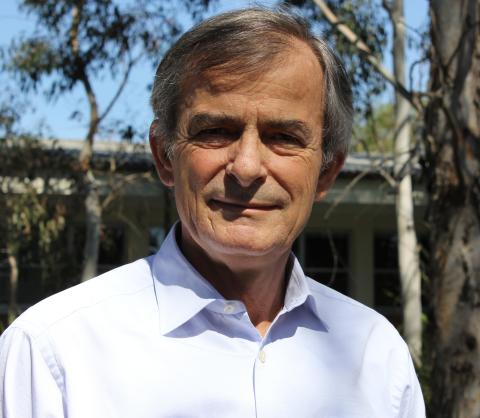Branko Celler
DOB: 22/04/1949
Professor of Biomedical Engineering Emeritus Professor at the University of NSW
In 2004 I had a chest X-Ray that first suggested that I had a cardiac aneurysm but was later identified as probably lung sarcoidosis. However, from the appearance of the X Ray it was thought that the Sarcoidosis was not active and it was suggested that I should forget about it!
However in July 2012, whilst at work I began to experience a marked slowing of my heart rate and quite severe abnormal heart rhythms. These symptoms initially settled down but later that evening they re-appeared and progressed throughout the night. The following morning, I presented at St Vincent’s hospital Emergency department and was immediately admitted with complete heart block most likely associated with cardiac sarcoidosis. A Doppler echo study was carried out, which revealed mild dilation of both the LV and LA chambers, a reduction in LV fractional shortening to 32% and a reduced ejection fraction of approximately 55%.
Within a week my heart rate had dropped to 35bpm and I was fitted with a CRT Implantable Cardiac Defibrillator pacemaker to prevent heart failure and death. A subsequent PET scan revealed persistent reduced perfusion in various parts of my heart, mild dilation of both the LV and LA chambers, a reduction in LV fractional shortening to 32% and a reduced ejection fraction of approximately 55%.
There is no cure for sarcoidosis and accepted treatment is with large doses of corticosteroids which are gradually tapered off over time. However, the side effects of this therapy can be severe and I refused to have it administered. I spent many months researching sarcoidosis in the clinical and scientific literature and contrary to accepted clinical dogma, I became convinced that sarcoidosis was caused by mycobacteria, most likely Mycobacterium avium paratuberculosis (MAP).
However it was impossible to culture this mycobacterium in Australia and it was only a chance encounter with Prof Borody from the Centre for Digestive Diseases, who was also interested in MAP as a causative agent in Crohn’s disease, that directed me to Otakaro Pathways in New Zealand, which uses novel techniques to culture MAP in blood from patients with Crohn’s disease and livestock with Johne’s disease. It was subsequently demonstrated that I had active MAP in my blood which was capable of reproducing and multiplying.
I discovered that there was an antibiotic regime that was used to combat the effect of MAP in Crohn’s disease. Because of the similarity between MAP in Crohn’s and MAP in Sarcoidosis, I undertook the treatment for a period of one year. After one year the PET scan showed complete resolution of the sarcoidosis activity in my heart and culturing of MAP similarly showed a complete absence of the mycobacteria. This has never been demonstrated previously and appeared a complete cure for the Sarcoidosis! As a result I was advised to stop the antibiotic regime.
Unfortunately, although the MAP had been eliminated from my blood, they were still hiding in my cells and my microphages and within one year they re-appeared in blood culture, but now in drug resistant form! Two more years of the same MAP antibiotics were not able to have any effect, and damage to my heart is now probably ongoing!
My ejection fraction subsequently fell to 40-45% as my heart continued to sustain damage from the sarcoidosis over subsequent years. I am now probably between Stage II and III of the New York Heart Association scale for heart failure and am seeing a re-emergence of previously dormant lung symptoms.
Clearly, new solutions to Sarcoidosis need to be found as progress over the last decade, since my first acute episode of cardiac sarcoidosis, has been glacial! We are hopeful that SARI with public funding support will be able to make a difference.
A case study of one is not sufficient to influence clinical practice! Research is needed on new antibiotic regimes, better understanding the relationship with Vitamin D, the design of possible vaccines, better ways of diagnosing and managing sarcoidosis and developing a better understanding of how the immune system and a patient’s own genetics lead to susceptibility to MAP. Infection. These are some of the key objectives of SARI, for which we need the support of the public.
Greater details of my journey with sarcoidosis were published in a peer reviewed journal. Should you be interested in the additional detail provided, please see the following reference.
Celler BG. Case Study: Cardiac sarcoidosis resolved with Mycobacterium avium paratuberculosis antibiotics (MAP). Sarcoidosis, Vasculitis, and Diffuse Lung Diseases. 2018;35(2):171.
Branko Celler
26/10/2022
